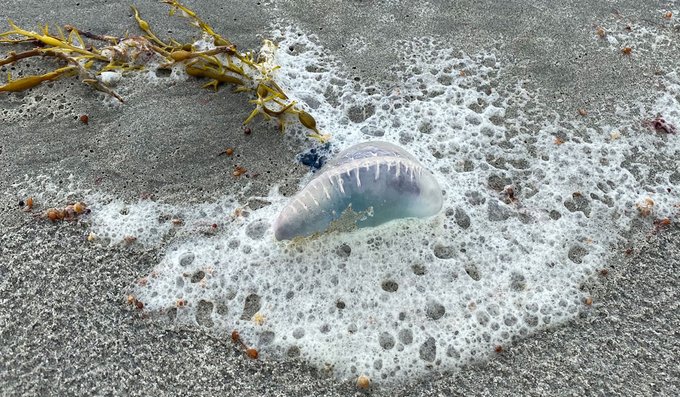All the rain we've been having doesn't just ruin your beach day when it falls - it can also impact water quality and lead to swimming closures.
Swimming was closed at dozens of beaches over the weekend, despite a sunny Saturday with temperatures close to 90 for many. The Massachusetts Department of Public Health said this is due to the significant rainfall the region has been seeing.
STAY IN THE KNOW
Watch NBC10 Boston news for free, 24/7, wherever you are. |
|
Get Boston local news, weather forecasts, lifestyle and entertainment stories to your inbox. Sign up for NBC Boston’s newsletters. |
"Current beach closures are likely the result of recent rainfall, as just about every week since the start of April has featured significant rain in Massachusetts – nine of the past 15 weekends have had measurable rain," a department spokesperson said in a statement. "This unusual pattern has allowed bacteria to thrive at certain beaches. Elevated bacteria levels in the water can be unsafe for the health and well-being of swimmers.”
As of July 10, there were 53 beach closures in the state. At the same time last year, that number was significantly lower at 40. There are about 1,100 public and semi-public beaches subject to DPH water quality regulations, which require regular testing for bacterial indicators of human fecal waste, and public notice, in the form of posted notices, of any unsafe results by local health officials. The City of Revere, home of popular Revere Beach, warns that swimming or ingesting contaminated water could result in symptoms like nausea, diarrhea, stomach cramps, chills or fever.
Get top local stories in Boston delivered to you every morning. Sign up for NBC Boston's News Headlines newsletter.
It is not uncommon for beaches to close after a rain storm, which can wash bacteria or other materials on land into the water. In 2022, bacteria was the cause of 88% of postings. Beaches may also be closed for issues like algae blooms, preventative closures before a rainfall, marine animals like jellyfish or other dangers like storm water overflow, damage or water clarity issues.
Beaches are able to reopen once test results show bacteria levels back to a safe range.
The state also issues reports on water quality as part of the monitoring process. In general, around 5% of the total number of samples in any given year exceed water quality standards - a metric called exceedance rate. According to DPH, 2021 saw the highest yearly exceedance rate reported for both marine and freshwater beaches -at 7.9% and 6.7%, respectively. It remains to be seen where 2023 will land.
DPH notes that human behavior can play a role in keeping beaches clean, whatever the weather. Here is a list of tips to help:
- Clean up after your pets
- Do not feed birds – this only encourages the birds to hang out at the beach, which increases the risk of fecal matter
- Use public restrooms
- Pick up and throw away trash using public waste bins
- If there are no public waste bins – pack up your trash and properly dispose of at home
- Do not enter the water if you are ill/not feeling well
- Change diapers and put plastic/rubber pants (e.g., swim diapers) on diapered children before allowing them in the water
- Dispose of boat sewage at onshore sanitary facilities
- Do not dump anything down storm drains; water moving through storm drains do not get treated at a wastewater facility and flows directly into our lakes and streams
- Avoid using fertilizers and pesticides on your yard – these chemicals are easily carried into our surface waters during rain events and snowmelt
- Use walkways and do not walk on dunes – this helps reduce erosion and preserve vegetation that filter out pollutants from runoff before they reach the beach
To learn more about water quality monitoring, click here.



